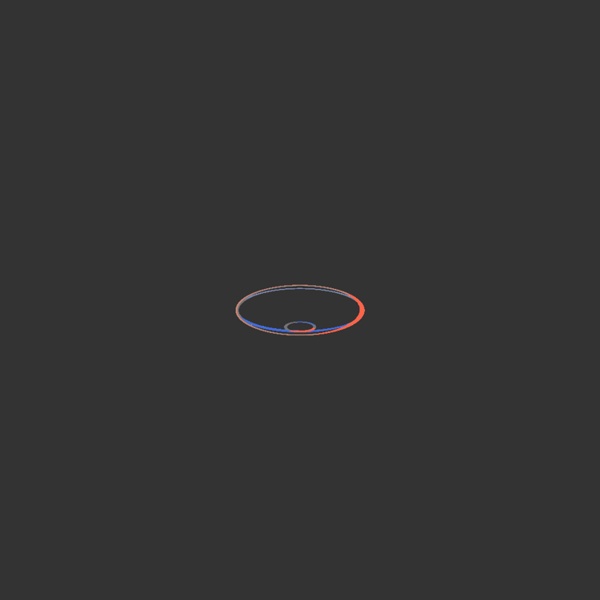The Large Hadron Collider
The Large Hadron Collider (LHC) is the world’s largest and most powerful particle accelerator. It first started up on 10 September 2008, and remains the latest addition to CERN’s accelerator complex. The LHC consists of a 27-kilometre ring of superconducting magnets with a number of accelerating structures to boost the energy of the particles along the way. Inside the accelerator, two high-energy particle beams travel at close to the speed of light before they are made to collide. Thousands of magnets of different varieties and sizes are used to direct the beams around the accelerator. All the controls for the accelerator, its services and technical infrastructure are housed under one roof at the CERN Control Centre.
Related: Space
World Magnetic Model Calculator
Use the tool below to compute values for the geomagnetic field and secular variation for a given set of coordinates and date. This calculator uses the World Magnetic Model as released in Dec 2019. Choose the geodetic latitude and longitude either by entering the coordinates into the form below (decimal degrees may be entered into the 'degrees' field, and degrees S or W should be entered with a negative sign), or by simply clicking the location on the map. The altitude and date may be set using the appropriate form fields. Clicking on the 'Show result on map' button will display the values for the chosen coordinates in a pop-up window. As this is based on a web service you can also obtain results in XML format using an HTTP GET request Please note that for Internet Explorer 10 and earlier there may be occasional erratic behaviour from the clickable map and the pop-up window.
SETI@home
Online Model of Solar System
Pulsar Sounds (Jodrell Bank Observatory)
A pulsar is a highly magnetised neutron star, with a radius of 10-15 km, having somewhat greater mass than the Sun which has a radius of approximately 1 million km. Radiation is beamed out along the magnetic poles and pulses of radiation are received as the beam crosses the Earth, in the same manner as the beam from a lighthouse causes flashes. Being enormous cosmic flywheels with a tick attached, they make some of the best clocks known to mankind. The sounds on this web page directly correspond to the radio-waves emitted by the brightest pulsars in the sky as received by some of the largest radio telescopes in the world. To listen to the pulses of a radio pulsar, click on the sound icons below. Click on the movie icons to see visualisations of the signals. Pulsar recordings Some questions and answers What do I see in the movies? How are the sounds created? Why is the sampling rate not 44.1 kHz? Is there any need to correct for "dispersion"? Some simulated pulsar sounds
Your Age on Other Worlds
Want to melt those years away? Travel to an outer planet! <div class="js-required"><hr> This Page requires a Javascript capable browser <hr></div> Fill in your birthdate below in the space indicated. (Note you must enter the year as a 4-digit number!) Click on the "Calculate" button. The Days (And Years) Of Our Lives Looking at the numbers above, you'll immediately notice that you are different ages on the different planets. The earth is in motion. The top-like rotation of the earth on its axis is how we define the day. The revolution of the earth around the sun is how we define the year. We all learn in grade school that the planets move at differing rates around the sun. Why the huge differences in periods? Johannes Kepler Tycho Brahe Kepler briefly worked with the great Danish observational astronomer, Tycho Brahe. Here you see a planet in a very elliptical orbit. Kepler's third law is the one that interests us the most. The Gravity Of The Situation Isaac Newton ©2000 Ron Hipschman
YouTube: Роскосмос ТВ
Новостная интернет-программа «Космическая среда» Телестудии Роскосмоса. Выпуск 270. В программе от 12 февраля 2020 года:- Послеполётная конференция командира корабля «Союз МС-13».- Запуск аппаратов OneWeb с Байконура.- «Физика плазмы в Солнечной системе»: конференция в ИКИ РАН.- Зонд Solar Orbiter передал первый сигнал из космоса. - Роскосмос и DLR. - Подготовка индийских космонавтов.- Одной строкой: Олег Скрипочка – командир МКС, Новый SIRIUS, «Электро-Л» сделал первый снимок, Снимки тёмной материи, Иран не вывел спутник. - Хронограф: 20 лет успешной работы «Фрегата».- Астрофотография недели: На орбите Полярного сияния, Млечный путь над Йеллоустоном, Вулкан Фудзи и туманности. Присылайте ваши фотографии и вопросы о космосе tv@tvroscosmos.ru Show less Новостная интернет-программа «Космическая среда» Телестудии Роскосмоса. Присылайте ваши фотографии и вопросы о космосе tv@tvroscosmos.ru Show less
Related:



